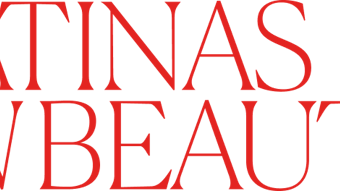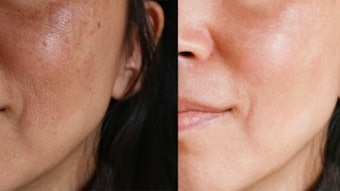Despite market slowdown, India remains one of the fastest growing beauty markets globally, growing at 13% per annum and valued at $6.3 billion. As the middle-class consumer base and its disposable income grows, the market is moving nearly four times faster than the $52 billion value of mature beauty markets and twice as fast as the $270 billion global market, according to a recent report by market research firm Kline & Co. Currently, the market is importing cosmetics and toiletries and intermediate raw materials worth $120 million. The color cosmetics market currently accounts for $60 million of the total market, while skin care accounts for approximately $180 million.
The hair care market is pegged at $200 million, and the herbal cosmetics segment dwarfs the others at a value of $630 million. Color cosmetics is the fastest growing segment, as more and more women become aware of looking good through the use of makeup; nail enamel ($23 million) and lipstick ($21 million) account for about 65% of this segment. Men’s personal care, another fast growing segment, is valued at approximately $165 million.
With its high growth rate, the market offers extensive opportunities to domestic and international players. However, high duty structure and certain ambiguities in terms of investment rules are among the complaints that companies looking to enter India make, and the reason that non-Indian brands account for only 20% of the total market.
Even with double-digit growth rates, the market penetration of cosmetics and toiletries products in India is very low. Current per capita expenditure on cosmetics is about $1, compared to $36.65 in other Asian countries. This low market penetration for cosmetics and personal care products in India offers an opportunity for more significant growth down the road in this country of 1.2 billion people.
Quicker Recovery Expected for Indian Market
According to a recent Deloitte report, the Indian market is expected to recover faster than other markets from the current economic slump. For the beauty brands operating in India, this translates to a steady source of income, particularly as more and more Indian consumers continue to buy beauty products as lifestyle statements—in addition to grooming and personal care must-haves.
According to a spokesperson for Clarins, Indian consumers have not been as hard hit as their Western counterparts, although economic worries have crept in as news of the decline of outside markets continues to make headlines. And it is clear that multinationals still see sustainable potential in the Indian market—evident in the number of brand retail locations opening in cities across India.
Continued success, however, also lies in the ability to bring products and services that fill the vacuum in the current spectrum of products on the Indian market, according to the report.
Brand Looks to U.S. Expansion
Ayurvedic beauty recipe-based Shahnaz Husain, one of India’s oldest brands, is looking to expand its presence in the U.S. market; the brand’s U.S.-based distributor is scouting retail partners for its luxury-positioned skin care. The herbal “remedies” are made with diamond dust, crushed pearls and 24-karat gold—ingredients mentioned in ancient ayurvedic beauty treatments.
Currently, the products are sold through Amazon, in addition to Indian brick-and-mortar stores. Reportedly, in addition to shelf space, the brand is exploring the potential of electronic outlets such as QVC.
In considering the market expansion, Shahnaz Husain is working to tweak the creams and lotions (choosing lighter fragrances and adjusting product consistency) to match the U.S. market’s needs and tastes.
The Body Shop Adding Makeup to Indian Offering
The Body Shop—which has noted particular success in India with body butters and washes—is serious about evolving its selling proposition in India, which is a relatively new market for the company. In the last two years, the company has demonstrated continued growth, and the company plans to focus on promoting its makeup range in 2009. Its makeup lines, in fact, are currently undergoing a revamp to be more in line with global trends. According to sources, L’Oréal, the brand’s parent company, is looking to make the most of the naturals trend and promote the concept of “caring through makeup” by highlighting the products’ natural ingredients.
In fact, throughout 2008, the company was very aggressive about pushing its makeup collection in the Indian market by promoting new makeup formats and colors that most Indian women love. With its winter collection, The Body Shop is hoping to make a dent in the makeup market in India, which is dominated by Lakme, other L’Oréal brands and Maybelline. A company source says to expect a whole new range of lipsticks—one of the fastest-selling beauty products in India— in 2009.
Nature-based Beauty Among Top Sellers
The Indian “herbal” care market is currently valued at $630 million, and the pull of products in this category is so strong for consumers that beauty giants such as L’Oréal, Estée Lauder and Unilever are looking to extend their presence in the market. Estée Lauder, for example, bought a stake in the popular ayurvedic beauty brand Forest Essentials in 2008, and L’Oréal is scouting the market for an ayurvedic line to acquire—reportedly the Biotique brand is on its radar. Unilever’s Indian arm, Hindustan Lever, has extended its presence in the natural care market by launching a range called Ayush, a line of ayurvedic beauty and health products. It has also opened a chain of ayurvedic therapy centers under the Ayush brand.
Potential for Beauty Expo; Spa Brands Growing
With the terror attacks in Mumbai, a falling stock market and a shaky global economy, one would expect beauty exhibitions to be a failure in India. However, the response at the recently held Professional Beauty & Fitness India 2008 belied the situation.
According to the organizers, the event attracted 2,953 visitors, with 55 companies from 13 countries featuring their goods and services. The organizers focused on bringing an increased number of exhibitors from Western countries to cater to the increasing demand for quality products. Exhibitors from France, Belgium, Canada, the Czech Republic, Vietnam, Germany, Italy, Malta, Spain, the U.K. and the U.S. had a presence at the show, in addition to Indian companies.
With the beauty service industry growing rapidly in India, more and more spa beauty brands are looking for distributors. This trend was apparent at the show. Unlike the 2007 edition, where hair care and beauty equipment companies were the majority, spa lines were the primary focus. Most companies showcasing their products, in fact, featured multiple spa lines—with one line targeted at spa therapists and estheticians and the other line for retail.
According to the organizers of the event, a majority of the companies present in 2008 committed their support for the next edition of the show (Nov. 29–Dec. 1, 2009). In addition, Germany has confirmed a country pavilion, which will be supported by the German government.
Priyanka Bhattacharya is a writer and journalist covering the beauty, health and wellness industries in India. She is the contributing beauty features writer for several leading Indian women’s magazines.










